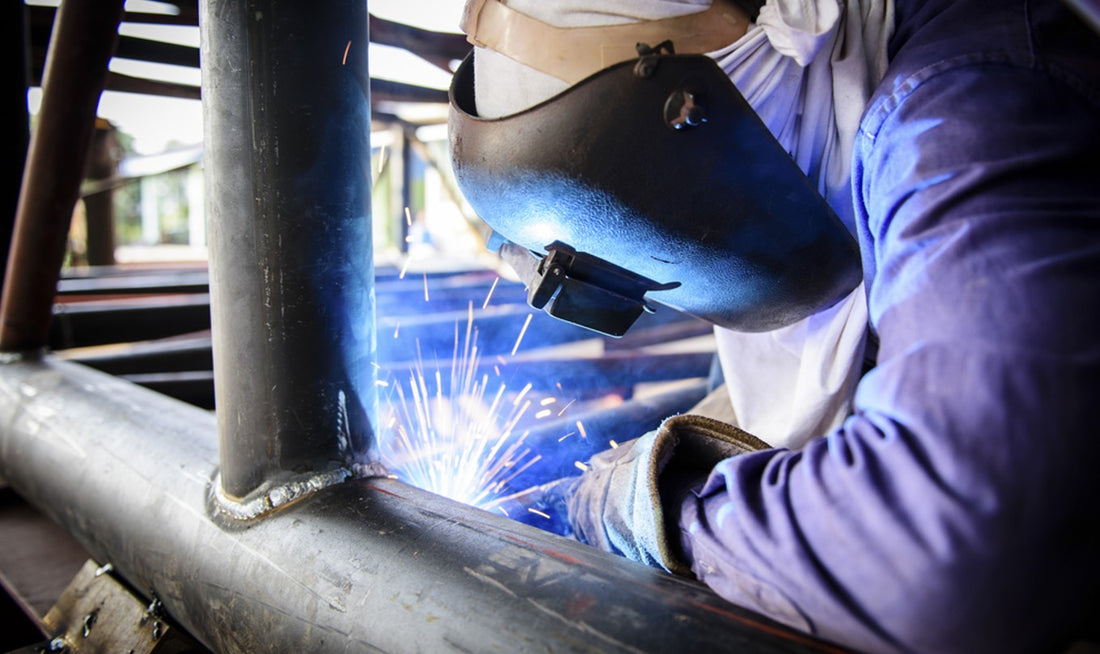Slag is an integral part of many different welding processes. While slag might have a bad reputation among welders due to how difficult it can be to remove, an experienced welder knows just how necessary it is.
In this article, we’ll be breaking down the reasons for weld slag’s existence, why it has a negative reputation among those who aren’t well-educated about what it is, what kind of welding and brazing processes rely on it, and more.
We’ll also be getting into why weld slag occurs and the benefits that it brings into the process. Finally, we’ll talk about removing it from finished welds and why it’s a good idea to do so.
What Is Slag, and Why Does it Exist?
To break it down as basically as possible, we should go to the American Welding Society, one of the world’s leading groups of expert welders. They define slag as a product that results from the dissolution (burning) of welding flux and impurities during welding or brazing.
Welding flux is a protective coating of materials that goes around welding rods. During the welding process, this protective flux coating burns up and forms a protective layer of gasses that surrounds the welding process.
Flux helps ensure that no oxygen or other particles from the environment or atmosphere can come in contact with the molten metal and cause a weld defect, impurities, or weaken the weld in any way.
When melted flux burns away, it leaves welding slag in its place. This non-metallic material left behind is usually seen as a hardened layer covering the weld site. Depending on the flux composition, it is usually a hard and brittle material that must be chipped, scrubbed, or wiped off for the weld to look clean.
Slag serves a couple of purposes – not only does it effectively ensure that no harmful particulates get involved with the welding process, but it can also ensure that the molten weld pool remains in its proper place. Hardening around makes slag a great way to keep everything aligned when performing any welding that isn’t conducted on the standard flat surface.

What Welding Processes Will Have Slag?
The welding processes that will have slag are any processes that use flux. These include flux cored arc welding, shielded metal arc welding, and submerged arc welding process. During all these, the burning of flux is necessary to create a protective atmosphere around the welding process, so slag will show up at some point.
Depending on the welding process, the behavior, look, and consistency of slag can all be impacted. Depending on a welding wire’s chemical makeup, it can result in welding slag being more sticky, tactile, and resistant to removal.
For example, if higher levels of silica are present in slag after the welding process is completed, the resulting slag will likely stick to the surface with greater resilience, and you’ll have to break out a serious wire brush to remove it.
Why You’ll Want to Remove Slag (and When to Do It)
So, now that we know what slag is and why it’s so important, let’s talk about why you’ll want to remove it from your weld. First of all, it’ll make the resulting weld look better. The presence of slag means discoloration and rough surfaces that are full of burrs and tough to handle.
However, this is all secondary to the practical reasoning behind why you’ll want to remove slag – its presence will make refining those welds difficult. After all, slag is a byproduct of burning flux and has no practical purpose once it comes into existence. Therefore, it just needs to be scraped off.

There are two ways to do slag removal. One of these is to do so when your weld is still cooling, and the other is to remove it after the weld has cooled completely. If you remove the slag while it’s still cooling, you’ll have a smoother overall surface that looks nicer and has fewer discolorations.
Contrary to popular belief, you don’t want to remove the slag after everything has cooled down. This will mean that the slag has likely hardened, which can lead to all sorts of issues with the integrity of your weld.
While it might seem like this is easier for those who don’t have the most welding experience, it doesn’t mean it’s a good approach. Removing hardened slag from a finished weld can be done, but it will often damage the weld in the process.
You’ll also want to remove slag because of the risk of slag inclusion, where it becomes ingrained in a finished weld. Not only will this lead to aesthetic faults and obvious visual defects, but it can also mean that the weld is less stable than you would like. A general rule is that you never want to weld over slag, so ensure it isn’t in the picture after it has served its purpose.
What Else Should I Know About Slag?
At this point, we’ve covered everything a beginner needs to know about slag formation during welding. We hope that this article answers all the questions you had floating around your head about what slag is, why it’s useful in welding, and how you should go about slag removal from your weld area. Thanks for reading, and good luck with your future welding adventures!

